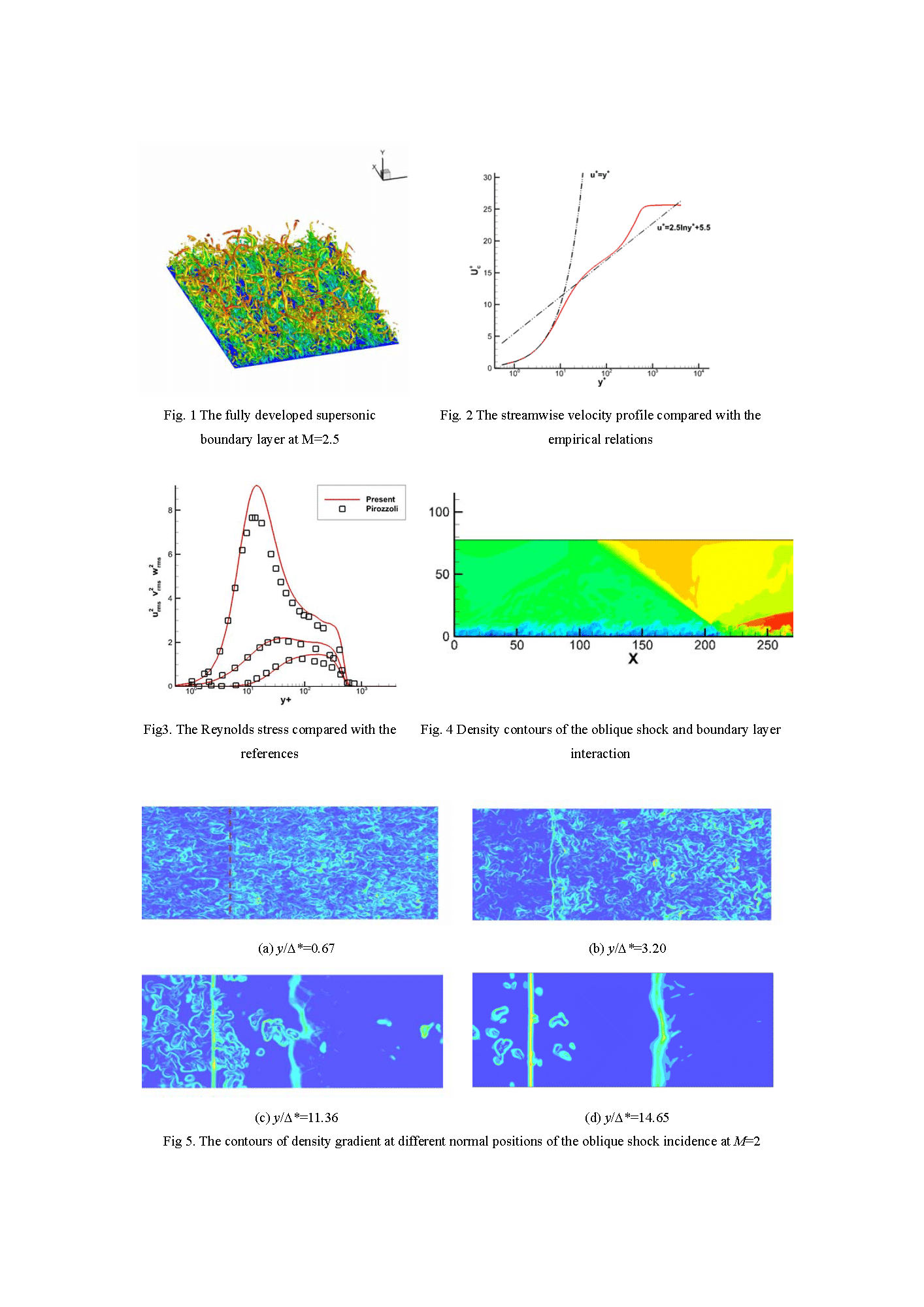Shock/boundary layer interaction is an important issue in the high-speed flow. The interaction may cause the boundary layer separation, the reduction of total pressure, and flow unsteadiness. These phenomenons will result in performance reduction, structural fatigue and other unfavorable effects. With regard to unsteadiness, it is known from literatures that there are oscillations with specific low frequencies around 1k Hz, which are found to be much lower than that of the incoming turbulent boundary layer. The phenomenon is believed to relate to SBLI and the separation caused by it. Although series of investigations have been made, the physical origin of the low-frequency oscillation is still open for discussion. Till now, at least three explanations have been reported. The first one still thought the unsteadiness of low frequency comes from the incoming flow boundary layer, especially from the super-structures with long streamwise length-scale (Beresh, Clemens & Dolling (2002), Clemens & Dolling (2007,2009), Ringuette, Wu & Martin (2008), etc.). The second one is that the unsteadiness comes form the feedback mechanism of the separation bubble ( Piponniau (2009), Wu & Martin (2007), etc.). The last one thought that the unsteadiness results from the coherent instability of the separated flow (Touber & Sandham (2009)). In addition, some spanwise instabilities were also observed, which were characterized by irregular distributions in spanwsie directions. Some studies (Wu & Martin (2007)) reported the owl-eye like pattern from the surface oil flow, and recent delicate experiments have shown the irregularity of the shock wave with certain length scale.
In this paper, studies are made regarding the unsteadiness and instability of SBLI by direct numerical simulation (DNS). In order to ensure the validity of the simulation, temporally developing supersonic boundary layers and corresponding recycled version are studied for validation. For the latter case, the Recycling and Rescaling Method (RRM) has been implemented to provide sustained turbulence. The obtained velocity profile and Reynolds stress showed good agreement with the references. Based on conducted practices, two types of shock/boundary layer interaction are studied: the oblique shock incidence and the compression ramp. In two problems, the structures in the interaction area are carefully studied, and the frequencies of the shock at the separation are analyzed. The companied unsteadiness is investigated thereby. By way of the interaction, three dimensional structures of the shocks are studied, which indicate the potential spanwise instabilities. The details of the amplification of turbulence intensity are investigated through interaction, and the quantitative analysis has been made. At last, the physical mechanisms are discussed.



